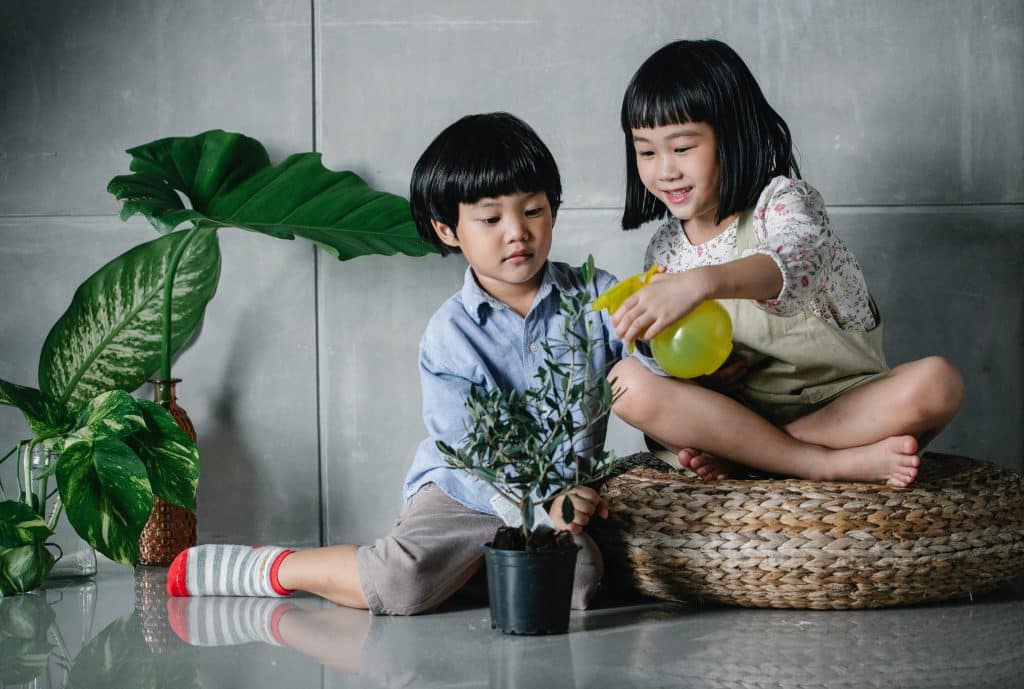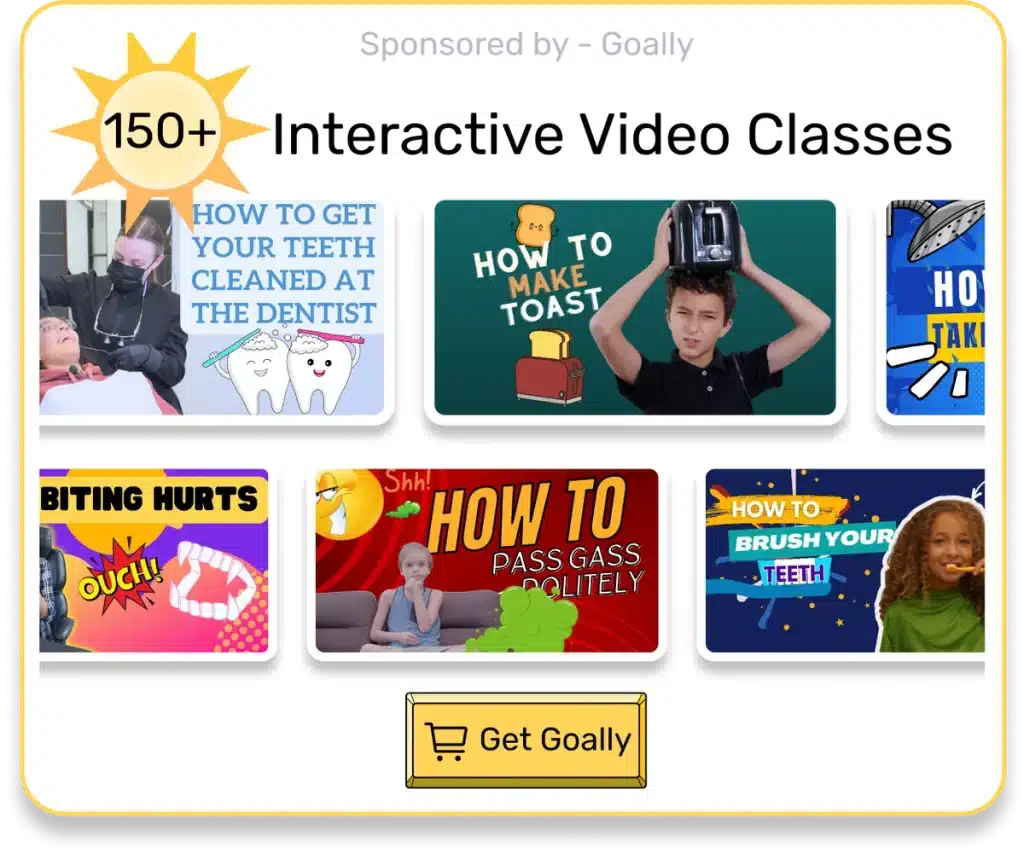We’ve all been there — watching our kids struggle with watering the plants, either giving them too much water or not enough. It’s a simple task, but when you’re working with neurodivergent kids or just young ones in general, even the simplest tasks can require a bit of guidance. In this blog, I’ll walk you through the steps to teach your kids how to water the plants, ensuring they learn a valuable skill and your plants stay happy and healthy.
Table of Contents
1. Choose the Right Tools
The first step in teaching kids to water plants is selecting appropriate tools. I always recommend starting with child-sized watering cans or spray bottles. These are not only easier for small hands to manage but also make the task more enjoyable. Here’s a quick rundown of kid-friendly watering tools:
- Colorful plastic watering cans (1-2 liter capacity)
- Spray bottles for misting delicate plants
- Small, lightweight hoses with adjustable nozzles
- Watering globes for a fun, scientific touch
Remember, the goal is to make watering plants accessible and exciting. I once worked with a family who painted their kids’ watering cans to look like animals. You should have seen the joy on those children’s faces as they “fed” water to their plant friends using elephant-shaped cans!

Read more: 5 Gardening Activities For Kids
2. Teach the Basics of Plant Needs
Before diving into the actual watering, it’s crucial to help kids understand why plants need water. I like to compare plants to people – we all need food and water to grow! Here’s a simple way to break it down for your children:
| Plant Need | Comparison to Humans | Why It’s Important |
|---|---|---|
| Water | Drinking water | Helps plants transport nutrients and stay upright |
| Sunlight | Eating food | Enables plants to make their own food (photosynthesis) |
| Soil | Our home | Provides support and nutrients |
By drawing these parallels, you’re not just teaching about plant care – you’re fostering empathy and understanding of living things. I’ve found that kids who grasp these concepts tend to be more careful and attentive when watering plants.
3. Demonstrate Proper Watering Techniques
Now comes the hands-on part! Showing kids how to water plants correctly is crucial. Here’s a step-by-step guide I use:
- Check the soil: Teach kids to gently touch the soil surface. If it feels dry, it’s watering time!
- Fill the watering can: Help them fill the can with room-temperature water. Explain that cold water can shock the plants.
- Water at the base: Show how to pour water slowly at the plant’s base, not on the leaves.
- Watch for drainage: If the plant is in a pot, wait until water comes out of the bottom holes.
- Clean up: Wipe any spills and empty the plant’s saucer after a few minutes.
I always emphasize the importance of not overwatering. To illustrate this, we could set up a simple experiment with two plants – one watered correctly and one overwatered. Kids love seeing the real-life consequences of their actions!
4. Create a Watering Schedule
Consistency is key when it comes to plant care. Helping kids create and stick to a watering schedule teaches them responsibility and time management. Here’s how you can make it fun:
- Use a colorful calendar: Mark watering days with stickers or drawings.
- Set reminders: If you’re tech-savvy, use a phone app to send alerts.
- Make it a routine: Tie watering to another daily activity, like after breakfast.
- Rotate responsibilities: If you have multiple children, let them take turns being the “plant captain” for the week.
In my experience, kids love feeling in charge. One family I worked with created “plant passports” where the children would “stamp” each time they watered. It became a fun challenge to fill up the passport!

Read more: List of Chores Your Kid Can Do Today!
5. Turn Watering into a Learning Opportunity
Watering plants offers a wealth of educational moments. Here are some ways to sneak in some learning:
- Measure the water: Use measuring cups to teach about volume.
- Keep a plant journal: Encourage kids to note changes in the plant’s growth.
- Discuss weather: Talk about how rain affects the watering schedule.
- Introduce plant varieties: Explain how different plants have different water needs.
I remember working with a child who was struggling with math. We started measuring water for plants, and suddenly, fractions became real and understandable. It’s amazing how hands-on experiences can unlock learning!
Understanding Different Plant Needs
As kids become more comfortable with basic watering, you can introduce the concept that different plants have different needs. This is a great opportunity to teach observation skills and adaptability. Here’s a simple guide you can create with your children:
| Plant Type | Water Needs | Signs of Thirst |
|---|---|---|
| Succulents | Less frequent, small amounts | Wrinkled, puckered leaves |
| Flowering plants | Regular, moderate amounts | Drooping flowers or leaves |
| Vegetable garden | Frequent, generous amounts | Wilting leaves, dry soil |
This diversity in plant care teaches kids about adaptability and paying attention to individual needs – valuable life skills that extend far beyond the garden!
6. Celebrate Growth and Learning
Lastly, don’t forget to celebrate your child’s efforts and the plants’ growth. This positive reinforcement can foster a lifelong love for gardening and nature. Some ideas to try:
- Take “before and after” photos to showcase plant progress
- Have a small celebration when a plant grows new leaves or flowers
- Create artwork inspired by the plants they’re caring for
- Use harvested herbs or vegetables in a family meal
I’ve seen children beam with pride when they realize their consistent care has helped a plant thrive. It’s a tangible way for them to see the impact of their actions and develop a sense of accomplishment.

Goally | Best Videos to Teach Life Skills
Give your kid an independent future. Goally has 100+ video classes teaching life skills like “How to Choose a Restaurant,” “How to Interrupt Politely,” and “How to Get Ready for School.”
Goally takes kids on an adventure that includes interactive practice and checkpoints along the way! No web browsers, YouTube, or social media.
Teaching kids to water plants is more than just a gardening lesson – it’s an opportunity to nurture responsibility, patience, and a connection with nature. By making it fun, consistent, and educational, you’re not just raising plants; you’re growing little environmental stewards. Remember, the key is to keep it light-hearted and praise their efforts. Before you know it, you might find your kids reminding you it’s time to water the plants!
Resources:
FAQs about Teaching Kids How to Water the Plants
How often should I water my plants?
The frequency depends on the type of plant, soil, and weather. Generally, most plants need watering when the top inch of soil is dry.
Is it better to water plants in the morning or evening?
Watering in the morning is ideal because it allows the water to soak into the soil before the heat of the day. Evening watering is also fine but can sometimes lead to fungal growth if the leaves stay wet overnight.
How much water do my plants need?
The amount varies by plant, but a good rule of thumb is to water until the soil is moist but not soggy. Overwatering can be just as harmful as underwatering.
Can I use tap water to water my plants?
Yes, tap water is usually fine for most plants. However, if your water is heavily chlorinated, it's better to let it sit out overnight to allow the chlorine to evaporate.
What’s the best way to water potted plants?
Water potted plants until water drains out the bottom, ensuring the entire root system is reached. Empty any excess water from the saucer to prevent root rot.
This post was originally published on 11/02/23. It was updated on 08/16/2024.

Hennah is an experienced writer and researcher, helping children with autism, ADHD, and other neurodivergent conditions. As a blog contributor for Goally, she combines her deep understanding of neurodiversity with practical advice, offering valuable insights to parents and educators.





